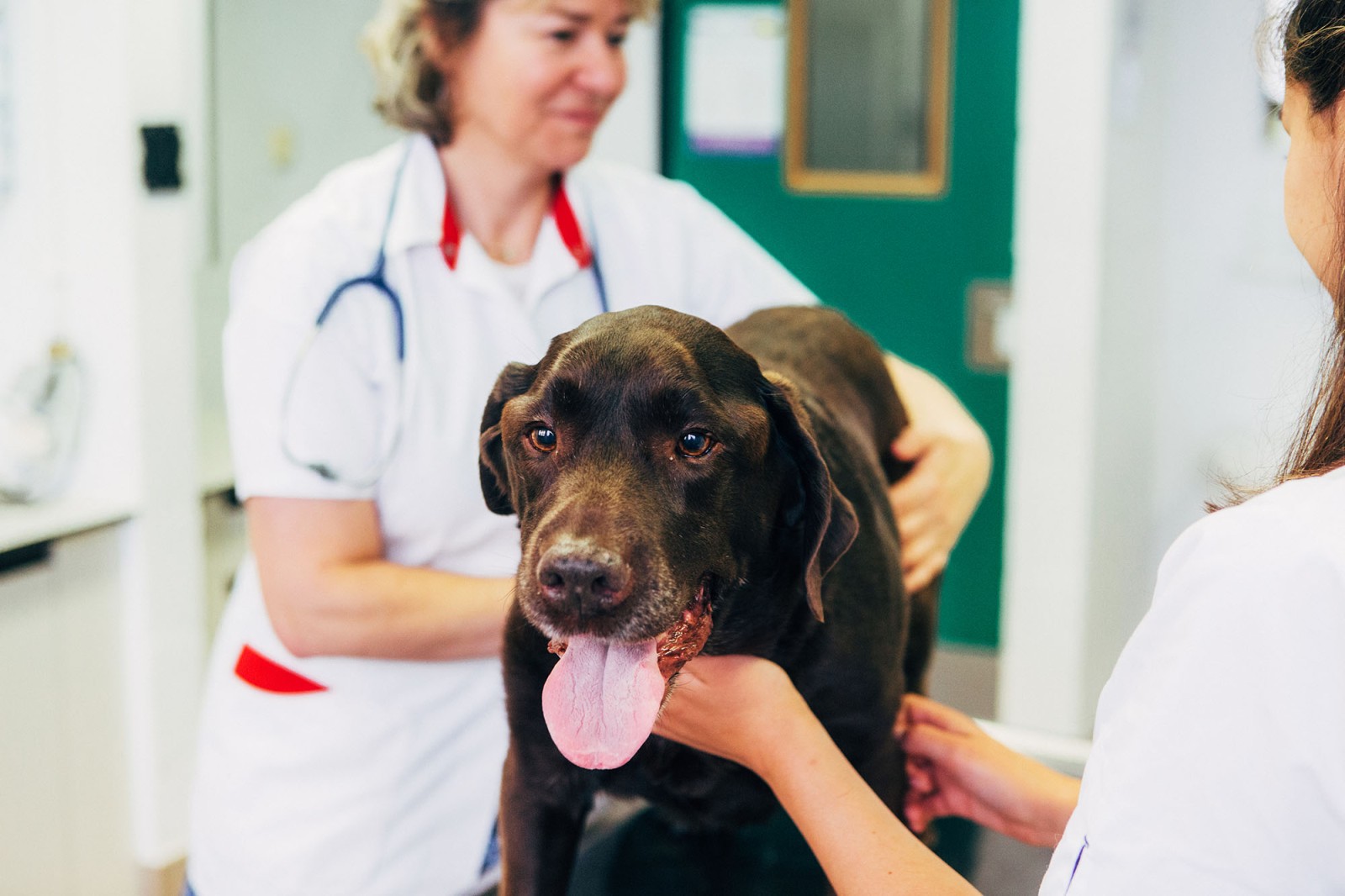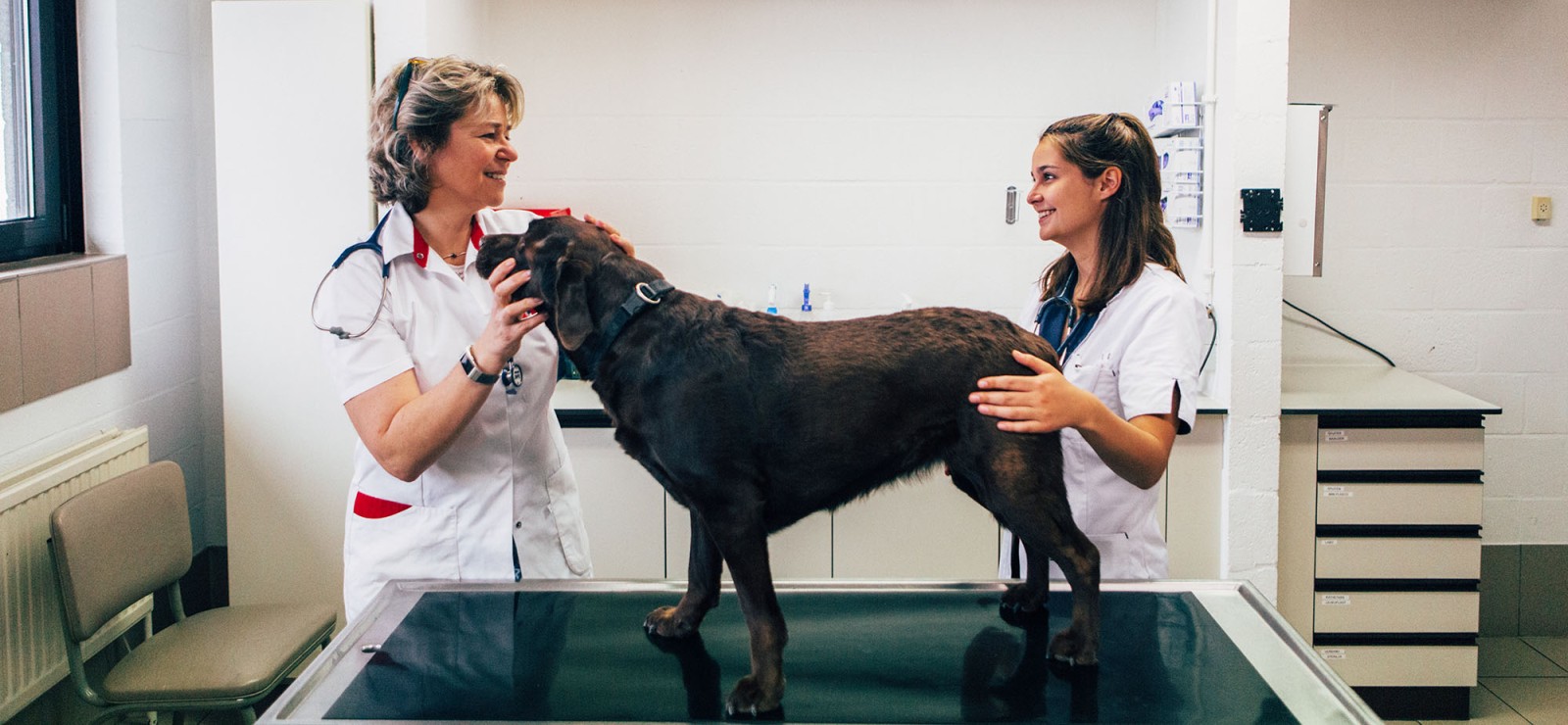While we humans tend to enjoy the hot summer days, it can often be hell for our dogs and cats. What’s the best way to keep those furry friends nice and cool? Common sense will get you a long way, says professor Sylvie Daminet, chair of the Department of Small Pets.
This article was first published on June 29, 2022. The interviewee was contacted for an update in July 2023.
“When the thermometer soars above 30 degrees, it’s best to watch out for your pet”, she says. “And that applies particularly to dogs. Cats are originally desert animals and have a better intuition than dogs to deal with the heat. They require less water, find cooler places and are less active at the hottest times of day.”
Protect young dogs
Why one dog becomes overheated more quickly than another depends on a number of factors. A thick coat, for example, or the breed. “Short-nosed dogs such as bulldogs are highly sensitive to heat, and should be watched more carefully. Their airways are an abnormal shape (in fact they are too narrow for the size of their body). For dogs, panting is a very important mechanism to lose excess heat. Short-nosed dogs find it very difficult to lose extra heat due to the abnormal design of their respiratory system.”
It is also best to lend a hand in protecting active young dogs. “After all, they would just keep playing and walking in the burning sun, until their paws get burned on the hot tarmac or sand or even worse: they get sunstroke. And sunstroke can be life threatening.”

Twee gouden regels om te vermijden dat een kat of hond oververhit raakt: “Hou ze uit de zon en voorzie voldoende vers en koel water. Stimuleer je kat of hond om meer water te drinken. Een tip is om op verschillende plekjes bakjes water te voorzien."
How do you recognise an overheated dog or cat
An overheated dog or cat can be recognised by extreme panting, excess drooling, lack of appetite and drowsiness. “In that case, contact your vet immediately”, stresses Sylvie. “If you do so in time and provide immediate cooling, then your dog or cat will usually recover quickly. You can cool them down by making them wet, or placing a cool towel on the groin. Do not use icy water as the temperature difference is too great.”
No sun and fresh water
Sylvie has another two golden rules to prevent your cat or dog from becoming overheated. “Keep your pet out of the sun and provide plenty of fresh and cool water. Encourage your cat or dog to drink more water. One tip is to provide bowls of water in different places. Some cats enjoy drinking from a water fountain. However, the water must be fresh. Cats above all are very choosy and will otherwise ignore it.”
If it turns really hot then it is easy to take one additional measure. “You can do a dog with a thicker coat a big favour with a summer trim, a cool mat or a home-made cool element.”
Never leave them in the car
Sylvie explains why dogs and cats can suffer more quickly from the heat: “People perspire to cool down. However, dogs and cats are unable to do that sufficiently. They only do that through the soles of their feet and that alone is not enough to regulate their body temperature.”
This means they cannot cool themselves down sufficiently. If it suddenly turns much warmer, for example, when shut in a car that is standing in the full sun, then overheating occurs very rapidly. And such a heatstroke is potentially life threatening. Organs can fail and the clotting mechanism can be disrupted, causing for example a fatal blood clot.
Every year, we see dogs suffering from this kind of heatstroke end up in the emergency ward at the Small Pets Clinic. “Sometimes we can do nothing to help. Dogs still die every summer because they were shut in a car that was too hot while their owner simply popped to the shop. So don’t do it! Not even for a short while.”

Sylvie Daminet specialises in internal medicine for pets and is a professor in the Department for Small Pets. She does not wish to ‘come out’ as a dog or cat person. (laughs) “I like both, even though dogs and cats are complete opposites. I already knew I wanted to be a vet when I was seven years old. My job is a dream that came true.”
Read also
What frogs can teach us about the origin of human hair
When in evolution did hair and nails originate? Ghent University researcher Kris Vleminckx shows that the genetic program to create human hair is at least 50 million years older than currently assumed.
Baby boom in the veterinary clinic thanks to Professor Ann Van Soom
Artificial reproduction methods, such as IVF and ICSI, have already been successfully applied in humans. But this has not been the case for many domestic animals. In horses, for instance, it has seemed to be an impossible task for a long time to fertilise the eggs outside the body. Until Ann Van Soom and her team started focusing on it.
These two students want to make a better world with sustainable dog food
What started as an exercise for a group work during their business engineering course is today, barely two years later, in 35 shops in our country. With Gutsy, Jack Lathouwers and Achilles Hannecart want to offer food that is healthy for your dog, but also for the planet.
Many assistance dogs are rejected before they can even embark on their ‘job’
Only forty per cent of assistance dogs in training actually end up becoming a proper assistance dog. This problem not only causes long waiting lists, it also costs a lot of money. A collaboration, in the form of a professorship between professor Bart Broeckx and the non-profit organisation Purpose Dogs aims to find a solution.




